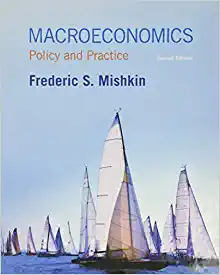Question
Answer all the questions below well. The quantity theory of money assumes that the: A velocity of circulation and nominal output are reasonably stable. B


Answer all the questions below well.
The quantity theory of money assumes that the:
A velocity of circulation and nominal output are reasonably stable.
B ratio of the velocity of circulation to the price level is reasonably stable.
C ratio of the money supply to the velocity of circulation is reasonably stable.
D velocity of circulation and real output are reasonably stable.
Keynes rejected the classical view that people should be encouraged to save to get out of
recession because increased savings will:
A be channelled into investment.
B reduce interest rates and hence the currency.
C reduce consumption and hence investment.
D improve confidence and increase investment.
When national income is less than full-employment national income, by how much must aggregate
demand be increased to achieve full employment?
A the amount by which the equilibrium level of national income falls short of the full employment level
B the amount by which injections exceed withdrawals at the full-employment level of
output
C the amount by which national income exceeds aggregate demand at the full-employment
level of national income
D the size of the balance of payments deficit at the full-employment level of national
income
16.7 Which of the following is inconsistent with the co-existence of unemployment and inflation?
A structural unemployment
B a downward-sloping Phillips curve
C a smaller multiplier effect than in an economy with no inflation
D a horizontal AS curve
The accelerator principle states that:
A investment is increased when interest rates fall.
B an increase in investment will lead to a more than proportionate increase in output.
C the level of investment expenditure is determined by the rate of change of national
income.
D investment is increased when interest rates rise.
Discuss the role that consumption plays in the business cycle.
Describe the accelerator theory and explain how it can be used to explain business cycles.


Step by Step Solution
There are 3 Steps involved in it
Step: 1

Get Instant Access to Expert-Tailored Solutions
See step-by-step solutions with expert insights and AI powered tools for academic success
Step: 2

Step: 3

Ace Your Homework with AI
Get the answers you need in no time with our AI-driven, step-by-step assistance
Get Started


